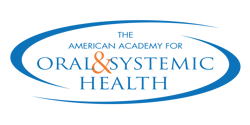Parafunction or Protective Function?
For years we have searched for answers regarding why some of our patients clench and/or grind their teeth. We have blamed this parafunctional activity on everything from premature occlusal contacts, dysfunctional mandibular position (too far forward, too far backward, too much vertical, too little vertical, in “CR,” not in “CR”), and of course emotional and psychological stress. We often see the results of bruxism in children and hear from the parents of the violent and loud nature of this parafunctional activity. We have provided every type of plastic to place between the teeth of patients to “control” their parafunctional behavior, or at least to protect their teeth and periodontium from damage—but often our attempts to control the behavior seem futile, and the patient continues to fight whatever piece of plastic we place in their mouth, or worse yet destroy their teeth and restorations. Why?
For decades a few practitioners have looked at the connection between the airway and temporomandibular disorders, particularly from a growth and development standpoint. In the last 30 years there have been more and more studies looking at exactly what is happening during bruxism events. These parafunctional activities have become better defined and described, but the “why” still remains.
However, recent studies indicate that in many cases parafunctional activity may actually be an attempt by the central and autonomic nervous systems to protect the organism. As dentists have become more involved in the treatment of obstructive sleep apnea, we are learning how very important the airway is. We’ve always recognized the “ABC’s” and know that “airway and breathing” are first and foremost, because without a proper airway we can’t breathe, and if we can’t breathe, we’re dead.
One study that should keep you awake at night (pun intended) was a pilot study which showed that 5 of the 10 sleep apnea patients had their sleep apnea WORSEN when using a flat plane nightguard, just like the ones you use to protect your patients from their bruxism. The authors state in their conclusion:
“This open study suggested that the use of an occlusal splint is associated with a risk of aggravation of respiratory disturbances. It may therefore be relevant for clinicians to question patients about snoring and sleep apnea when recommending an occlusal splint.”1
The good news is that when bruxism is related to airway issues appropriate therapy with a mandibular advancement device can reduce or even eliminate the bruxism. Knowing this can help you protect your patient’s teeth, protect your restorations (saving you thousands in remakes) and literally protect your patient’s lives.
If you’re already involved in treating OSA patients with oral appliance therapy, understanding that sometimes patients may “fight the appliance” if the airway is not being sufficiently protected can make the difference between treatment success and failure.
Unfortunately, bruxism does NOT always cease just because the airway is protected (it sure would be awesome if it was that easy!!). As such, proper appliance selection is still critical.
Understanding these connections and principles can make a huge difference in your ability to help your patients who suffer with OSA, bruxism and OSA related bruxism.
Jamison R. Spencer, DMD, MS
www.JamisonSpencer.com
208.861.5687
- Aggravation of respiratory disturbances by the use of an occlusal splint in apneic patients: a pilot study. Gagnon Y, Mayer P, Morisson F, Rompré PH, Lavigne GJ. Int J Prosthodont. 2004 Jul-Aug;17(4):447-53.
Dr. Jamison Spencer will be speaking about parafunction and oral appliance therapy options at AAOSH's 6th Annual Scientific Session. Visit the event page to learn more and register.
